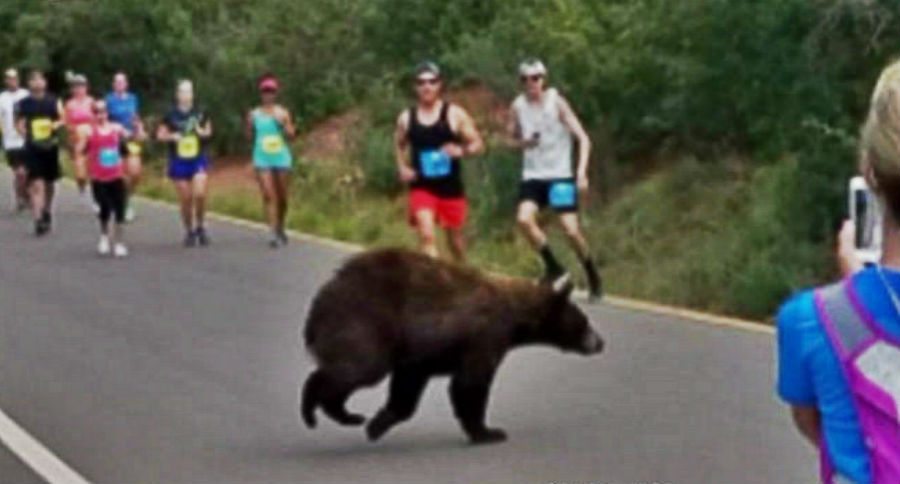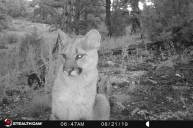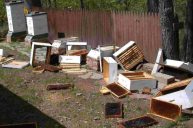Colorado is seeing an increasing number of human vs. bear conflicts these past few years. As a result, more bears are being killed by the state than ever before.
The Denver Post reports that up to 50 people a day are calling the Colorado southwest Parks and Wildlife regional office to report bear conflicts or incidents.
That's just in that in that corner of the state. Human vs. bear conflicts have increased throughout Colorado in the last few years.
Thus far this summer wildlife managers and landowners have euthanized 34 bears that were ostensibly in conflict with humans. Not counting bear hunters who harvest close to a thousand bears a year, bears being killed due to unintentional conflict with humans number in the low hundreds.
Last year 66 bears were euthanized by wildlife managers and another 77 were killed in bear vs. automobile collisions.
Colorado Parks and Wildlife Game Warden Matt Thorpe indicated that the agency is "...receiving more reports of bears investigating people, getting closer to people than we normally would expect. They're not demonstrating that natural fear of humans that we usually see."
More often than not, human vs. bear conflicts are the result of bears looking for and taking advantage of human food sources, such as trash receptacles, outdoor pet dishes and bird feeders. Bears are even breaking into homes and automobiles in their search for food.
CPW spokesman Lauren Truitt said, "With higher human population densities, bears can be expected to encounter human food more often unless people change their personal behavior. The closer a bear, or bears, live to populated areas the more we will have human-wildlife encounters due to the easy source of food available."
Bears also seem to be getting more brazen in their confrontations with people. A young man in northwestern Colorado was pulled from his sleeping bag by his skull by a marauding black bear (he survived the encounter). A Bayfield woman reported a bear chasing her children. In the Durango area at least four bears broke into homes. All of these bears were euthanized.

A black bear near the University of Colorado campus in Boulder. Chris Michael Paul
For CPW game managers, public safety is the number one concern, which often means that problem bears must be put down.
There are of course ways that humans can diminish bear encounters.
"Coloradans do care about their wildlife, and we need their help to keep these bears wild. It is on all of us to do our part by taking simple steps like locking up trash, taking down bird feeders," Truitt said. "If more people would be willing to secure their trash we could significantly reduce many of the encounters we face each summer."
CPW estimates the Colorado bear population to be between 17,000 to 20,000 animals. The state has subsequently increased bear hunting licenses as a result of the growing bruin population. In 1997 Colorado issued 10,000 bear licenses; by 2014 that number had jumped to 17,000.
Unfortunately, trapping and moving bears is not really an option either, as trapped bears inevitably must be relocated into areas already occupied by other bears.
We should be happy that the bear population is so robust. That's a great indicator that our wildlife conservation and management programs are working. People just need to be educated on bear behavior and tendencies in order to cut down on unwelcome confrontations with the large predators.
Like what you see here? You can read more great articles by David Smith at his facebook page, Stumpjack Outdoors.
NEXT: Michigan Bears Are Causing Big Problems for Beekeepers




